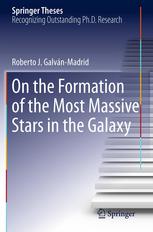

Most ebook files are in PDF format, so you can easily read them using various software such as Foxit Reader or directly on the Google Chrome browser.
Some ebook files are released by publishers in other formats such as .awz, .mobi, .epub, .fb2, etc. You may need to install specific software to read these formats on mobile/PC, such as Calibre.
Please read the tutorial at this link: https://ebookbell.com/faq
We offer FREE conversion to the popular formats you request; however, this may take some time. Therefore, right after payment, please email us, and we will try to provide the service as quickly as possible.
For some exceptional file formats or broken links (if any), please refrain from opening any disputes. Instead, email us first, and we will try to assist within a maximum of 6 hours.
EbookBell Team

4.1
60 reviewsThe most massive stars in the galaxy - those with more than 15 to 20 solar masses - are lilkely to ionize their surroundings before they reach their final mass. How can they accrete in spite of the presence of over-pressurized gas?
This thesis presents results of Submillimeter Array (SMA) and Very Large Array (VLA) studies of massive star formation regions in the early stages of ionization, as well as an analysis of numerical simulations of the evolution of these young HII regions. The results favor a picture in which very massive stars form in accretion flows that are partially ionized and that keep accreting material from their environment.